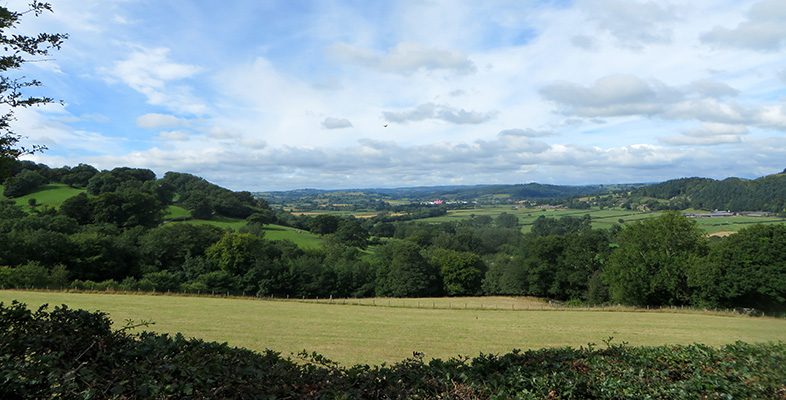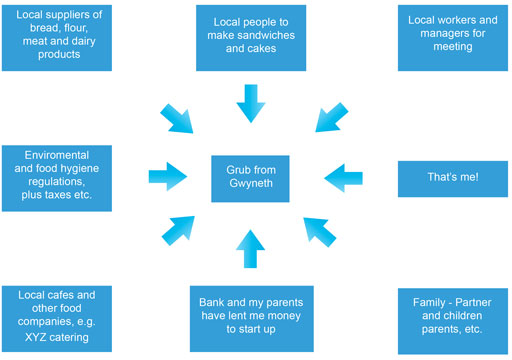2.6.1 Case study: Stakeholder analysis
Let’s see how Gwyneth approached her stakeholder analysis:
Case study: Gwyneth
I used the basic diagram and tweaked it to fit my situation. I changed ‘shareholders’, which I won’t have initially as I plan to start up as a sole trader, to ‘family’, as they will have a big influence on the business and also their needs are my priority.
I could have included many more boxes, but I decided to concentrate on the stakeholders I felt were most important to me as I start up. I am sure the influence of each stakeholder will be different in 12 months’ time.
I found it quite daunting at first to think that all these people had an interest in and an influence on my new company. I started to work out what each stakeholder wanted from me and this meant that it became clearer what the impact of each stakeholder might be.
I decided to include myself as a stakeholder so that I could look at my needs alongside everyone else’s, to see if they were compatible.
| Stakeholder | Demands/needs | Power/influence – strong/weak? |
|---|---|---|
| Family | Children need to be dropped off and picked up from school Monday to Friday. They need my time in the evenings and weekends. Need to make up the drop in income from reducing my hours in the café – approx £250 per month. | Very strong |
| Me | To make a success of the company, earn some money and gain a sense of satisfaction while being close to my family, with the potential of giving up my café job completely. | Strong |
| Local companies | Good quality products that offer good value for money for them and for customers leading to return custom. Need to present my region well as a producer of high quality local products. | Strong |
| Suppliers | If my business works, I will start to place regular orders, and I will need to ensure I have the right amounts and have cash flow to make prompt payment. | Medium |
| Environmental health/food hygiene and government | Food is produced in clean and hygienic surroundings that are safe for me to work in, my family to be around and for customers. I need to keep accurate records of sales and turnover. | Strong |
| XYZ condiments | I will have competition – from major retailers but also from other local producers – we can help each other out sometimes maybe? | Medium |
| Bank | I will need to borrow money to cover the cost of industrial catering supplies and a stall for the markets and fairs. The bank expects a reasonable rate of return on their investment and for me to make regular payments. | Medium |
| My parents | They have given me some money towards my first set of jars and labels. While there is no current pressure, I would like to give them their money back at some stage – they want me to succeed. They also provide childcare at weekends and during school holidays. | Medium |
I marked how strong the demands of each stakeholder are on me, which helped me see which to prioritise.
I wasn’t sure about the power of my parents as they are very reasonable, but should they stop helping with the kids they would be very powerful indeed! I will need to think about how my business and family life can adapt to each other over time, should my business become successful. I can’t always guarantee my parents will have the good health or time to help with childcare – while it is a little stronger than ‘goodwill,’ I don’t think relying on goodwill is a way to operate a professional business!
That made me realise that demands change and the power of each stakeholder can change over time. I guess I need to keep an eye on that as my business develops…
Your business plan must recognise the needs of each of these stakeholders. You can see that often their needs are conflicting, for example, the needs of workers to have a good rate of pay and the needs of local firms to have sandwiches at as low a price as possible. Running a business is about balancing these conflicting interests to achieve a compromise that is acceptable to as many stakeholders as possible.

